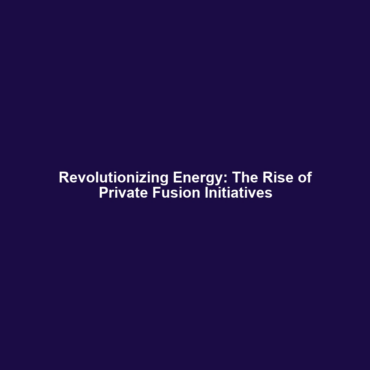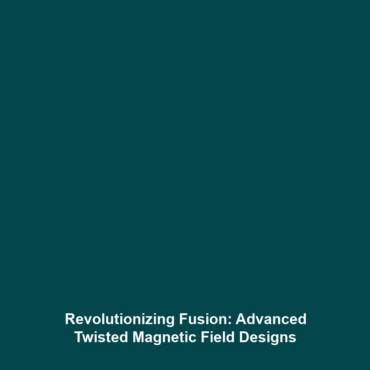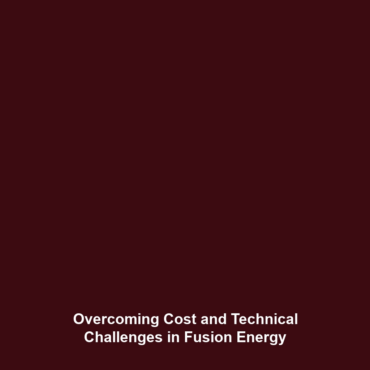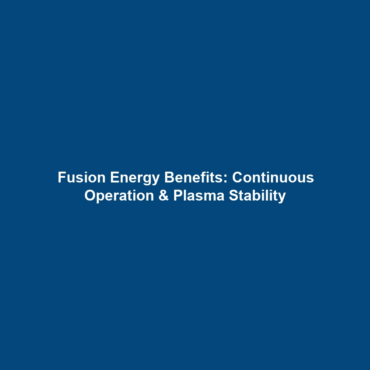Private Fusion Initiatives: Paving the Way for Future Fusion Energy
Introduction
Private Fusion Initiatives represent a significant shift in the landscape of fusion energy. These private-sector investments aim to provide sustainable and virtually limitless energy through advanced nuclear fusion technology. As global energy challenges intensify, understanding the role of these private initiatives becomes crucial in the broader context of fusion energy development. This article explores the fundamental aspects of private fusion efforts and their potential to transform the energy sector.
Key Concepts
Understanding Fusion Energy
Fusion energy is generated by combining light atomic nuclei to form heavier ones, releasing an immense amount of energy in the process—a reaction that powers the sun and stars. Private Fusion Initiatives focus on harnessing this energy for practical use on Earth.
The Rise of Private Initiatives
In recent years, numerous private companies have emerged, each with unique approaches to fusion technology. Notable players include:
- Helion Energy: Focuses on a pulsed fusion approach.
- Commonwealth Fusion Systems: Develops superconducting magnets to enhance plasma confinement.
- Tae Technologies: Innovates using advanced plasma physics techniques.
Applications and Real-World Uses
Understanding how private fusion initiatives are used in fusion energy is essential for grasping their potential impact on society. Some of the most significant applications include:
- Energy Generation: The ultimate goal is to provide a cleaner, sustainable energy source to meet global demands.
- Space Exploration: Fusion energy could power long-duration space missions, presenting a revolution in space technology.
- Hydrogen Production: Through fusion, hydrogen could be produced efficiently, enabling a hydrogen economy.
Current Challenges
Despite significant advancements, several challenges of private fusion initiatives persist, including:
- High capital investment requirements.
- Technological hurdles in achieving and maintaining plasma stability.
- Long timelines to achieve commercial viability.
- Regulatory and safety challenges associated with new technologies.
Future Research and Innovations
Looking ahead, the future of private fusion initiatives appears promising, with ongoing research aimed at overcoming existing barriers. Breakthroughs in materials science, superconducting technology, and plasma confinement are expected to emerge over the next decade, enhancing the feasibility of fusion reactors. The advancements could significantly accelerate the timeline for achieving practical fusion energy, potentially revolutionizing global energy systems.
Conclusion
Private Fusion Initiatives are set to play a vital role in the transition toward sustainable fusion energy. By investing in innovative technologies and overcoming existing challenges, these initiatives could yield ground-breaking solutions to the world’s energy demands. For more insights into fusion energy and its applications, be sure to explore our related articles on renewable energy solutions and nuclear innovations.





